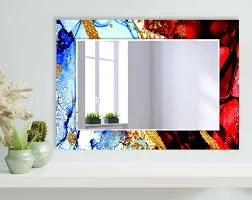

Understanding Heat Reflective Glass Benefits and Applications
Heat reflective glass has gained substantial popularity in recent years as a crucial component in modern architecture and design. This specialized type of glass is designed to reflect a significant portion of solar radiation, thereby reducing heat absorption. As a result, it plays a vital role in enhancing energy efficiency, comfort, and sustainability in buildings.
What is Heat Reflective Glass?
Heat reflective glass is typically coated with a thin layer of metallic or low-emissivity (Low-E) materials. These coatings act as a barrier, allowing natural light to enter while reflecting unwanted infrared radiation. This unique property helps maintain a stable indoor temperature, even during the peak of summer. The glass is available in various forms, including double or triple glazing, which further aids in thermal insulation.
Benefits of Heat Reflective Glass
1. Energy Efficiency One of the most significant advantages of heat reflective glass is its ability to reduce reliance on air conditioning systems. By reflecting solar heat, buildings can maintain cooler temperatures without excessive energy usage, leading to lower utility bills. This energy efficiency translates into reduced carbon footprints, making it an environmentally friendly option.
2. Increased Comfort Buildings equipped with heat reflective glass provide enhanced comfort for occupants. By minimizing glare and heat buildup, these structures create a more pleasant environment. This is especially important in commercial spaces, where employee productivity can be negatively impacted by uncomfortable temperatures.

3. UV Protection Heat reflective glass also offers protection against harmful ultraviolet (UV) rays. These rays can cause furniture, flooring, and artwork to fade over time. By incorporating heat reflective glass, property owners can preserve the integrity of their interiors, extending the life of their possessions.
4. Aesthetic Appeal Available in various colors and textures, heat reflective glass can complement a wide range of architectural styles. It provides a sleek, modern appearance while allowing for afternoon sunlight to brighten interior spaces without compromising comfort.
Applications of Heat Reflective Glass
Heat reflective glass is incredibly versatile and finds applications across various sectors. In commercial buildings, skyscrapers often utilize this type of glazing to control heat gain and enhance energy performance. Likewise, residential homes benefit from energy-efficient windows that make use of heat reflective properties.
Furthermore, heat reflective glass is increasingly used in automotive applications, where maintaining cabin temperature and protecting passengers from harmful UV rays are essential considerations.
Conclusion
Heat reflective glass represents a significant advancement in the field of building materials, providing countless benefits that enhance energy efficiency, comfort, and durability. As we continue to prioritize sustainability in our architectural designs, the adoption of heat reflective glass is likely to increase. It not only contributes to reduced energy costs but also plays an essential role in creating healthier, more sustainable living and working environments. As technology evolves, we can anticipate even more innovative solutions that leverage the advantages of heat reflective glass for a greener future.